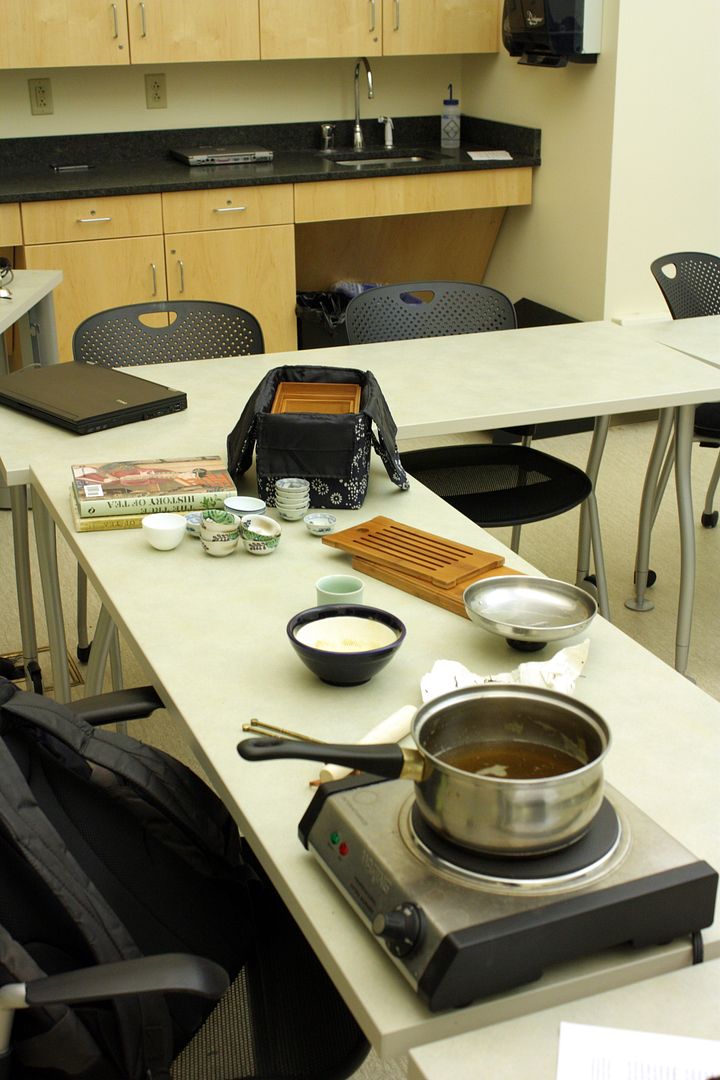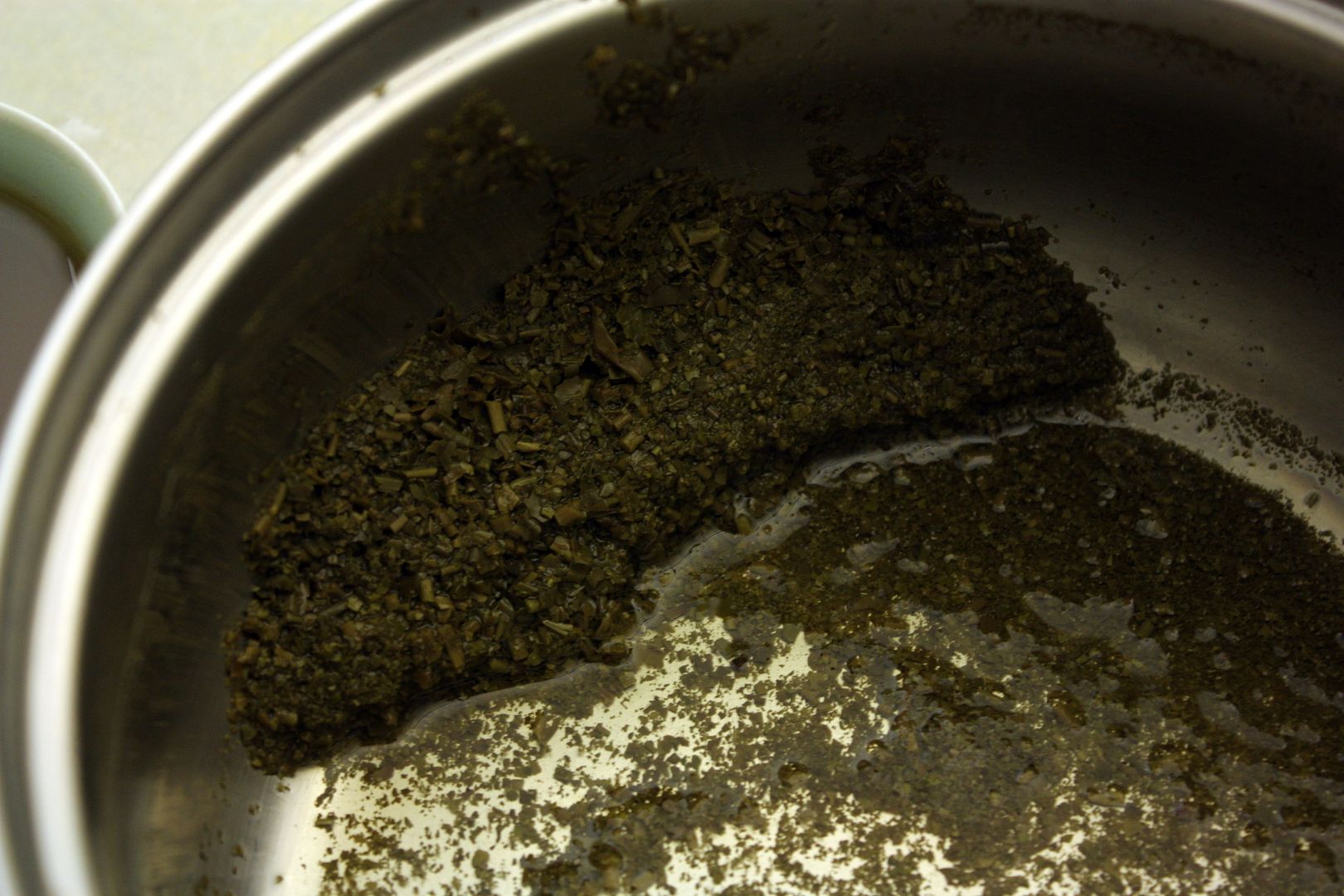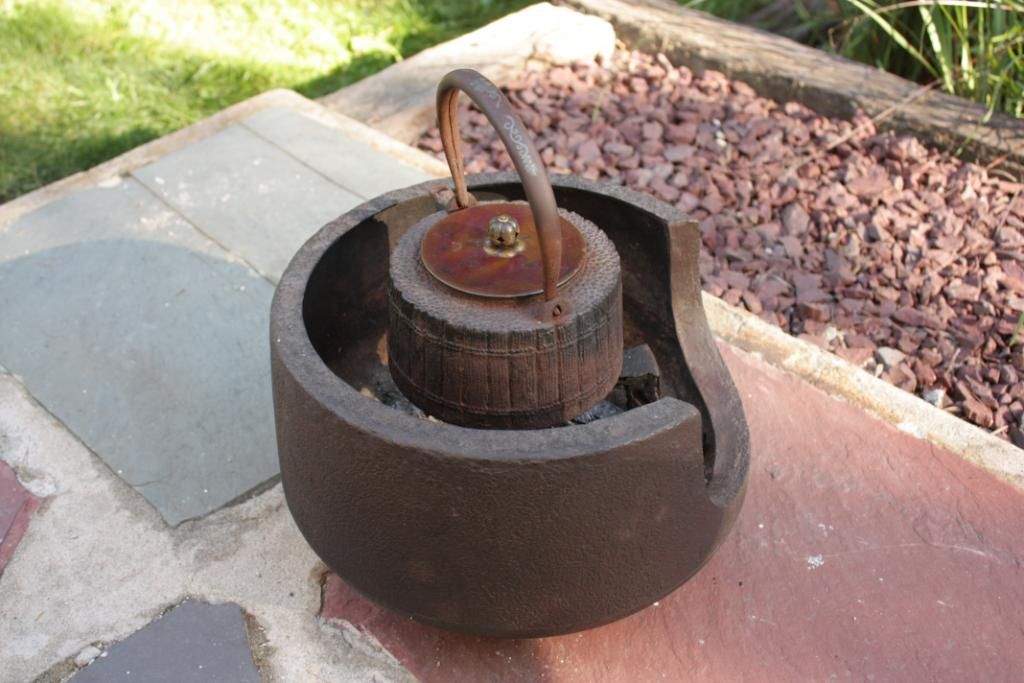So, we did it today in class, making Tang dynasty tea as best as modern, inferior equipment will do.

What you see here are the remnants, having already finished. I first asked them to work out from the Chajing what procedures we should follow. The served as our discussion, mostly.
We ground the dok cha up (thanks Corax and Maitre_Tea for the reminder of using dok cha), using what I estimate to be about 5g of tea in a big pot of water. The cheap Walmart bought mortar and pestle grounds it surprisingly well. Despite the fact that it’s not a Famen Temple silver grinder, it does the job. It’s certainly not as fine as, say, modern day matcha, but I don’t think it was supposed to be nearly as fine. We did roast the tea a little bit, but I’m confused about Lu Yu’s suggestion that it should be roasted so that the leaves are tender — I’m not sure how that’s possible without steam. Dry roasting will only make the tea drier, whereas if it’s tender, then the tea will be mushy and won’t ground well at all. Unless, of course, that’s the idea, but that creates all sorts of problems…. and would fundamentally change the way its taste.
We did skip the salt (I forgot to bring it, but probably a good choice anyway) and threw the tea in right after the fish eye stage. At this point, something rather interesting happened — the tea immediately formed a foam, a fairly thick one at that, which was unexpected. I turned off the heat, but allowed the pot to stay on the stove, as it’s going to be kept warm for a while. Students lined up to use the spoon to pour tea into the cups, which might be a little bit of a health hazard now that I think about it, swine flu and all (it’s going around). The tea is interesting in taste — greenish, not nearly as sweet as matcha, but definitely sweet. As I sort of expected, my students find it a lot more bitter than I did, which is normal. I think us teaheads have no idea what bitter means anymore, at least when it comes to tea.

You can see the tea is darkish. There’s plenty of huigan. Can’t say much about the qi. Drinking with or without foam made little difference. Some students went for seconds, as our cups were quite small. I think I ended up having about four to five cups (some while cleaning after class — didn’t want it to go to waste, after all).

You can see the grounds — pretty roughed up.
Was it a success? I suppose in the sense that we did something, and it turned out better than I imagined, yes, it was. Pedagogically, I thought doing something like this will highlight the differences in how you make something so long ago that can’t really be explained by words alone. I do wonder, though, about how interesting this actually is. I am a teahead, and if you’re reading, chances are you are as well, so naturally, this stuff excites you. Lu Yu was also writing for fellow teaheads, I think, and also trying to gain converts, if there were any. For students, especially first years, I can’t tell how much of this is actually interesting, and how much of it is just stuff.
Of course, there are all sorts of problems, chiefly is Lu Yu’s rather spare instructions — we really have no idea exactly how much tea for the water, how long to boil, etc. He’s not very clear, and rightly so — he was writing for people who knew these things, much like I never talk about how much tea to put when brewing puerh, or oolong, or whatever, because I assume my readers know.
Whatever it is though, I think, as I’ve said before, that Lu Yu, while great and historical, is really irrelevant as a source of tea wisdom. The tea he drank was too different, too remote.






Yeah whisky prices have been leaking too, as well as luxury watches. I wrote a post maybe a decade ago…